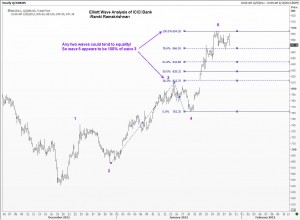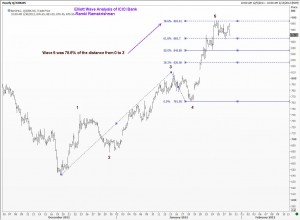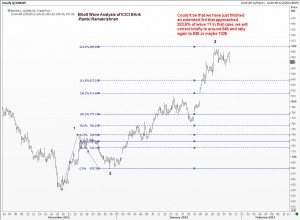This post seeks to illustrate how to trade using Elliott Waves. My goal is not to give you a comprehensive answer to this question, but to show you how to deal with a move that is happening.
The Indian markets have been moving nicely higher in recent weeks, and I am getting mildly bullish. One of the stocks that has rallied sharply is ICICI Bank. So we will use that to illustrate here.
There are three charts presented. The first two charts of ICICI Bank suggest that we have finished a five wave move, and therefore a correction back to the prior fourth wave level (or a 50% pull back) is possible. The third chart offers a more positive view of the market and says hey, maybe we have just finished an extended third. Take a look.



So what is the best strategy now? Once we correct the 5 wave move off the Dec 2011 low, we should get a very fast rally. In order to capture that, we need to be positioned long at suitable levels. INitial supports lie at 844, but a 50% correction from current top comes at 768, which is almost 10% lower. Can we afford such a big downswing? Suppose we buy at 845 and look to add at 770, will that be a better idea? What should we do if it just keeps going down and the Nifty collapses? Can we afford to hold on to this investment? Where should we get out? These are questions that only you can answer as it depends on your investment horizon and risk appetite. You should also be aware that ICICI BAnk will announce its Q3 2012 earnings on 31 Jan 2012 (tomorrow) at 9.30!

